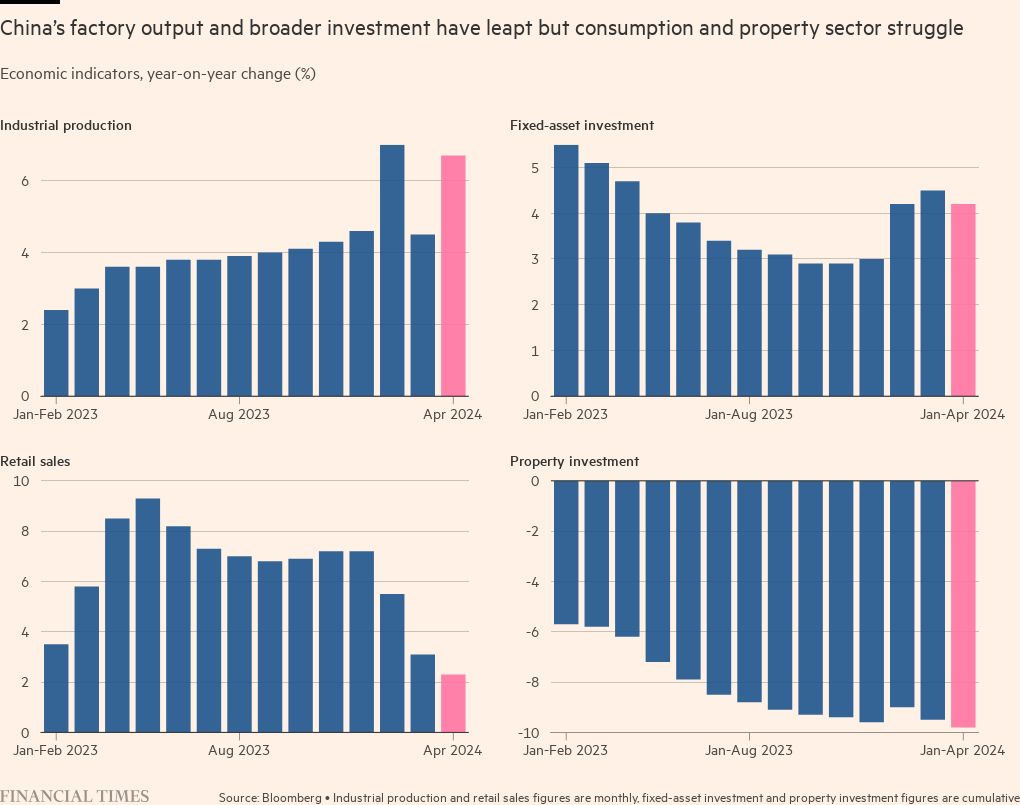China’s economic recovery is showing uneven progress, with factory output surging while retail sales continue to lag behind. The latest data reveals a divergence in the country’s economic recovery, as manufacturing activity picks up but consumer spending remains subdued. This trend highlights the challenges facing China’s economy in the wake of the COVID-19 pandemic.
Win Up To 93% Of Your Trades With The World’s #1 Most Profitable Trading Indicators
China’s industrial production exceeded expectations last month, with a 6.7 percent year-on-year growth in April. However, the growth in retail sales was slower, indicating weak consumer sentiment impacting the country’s recovery.
The government is taking steps to stimulate domestic consumption, with the People’s Bank of China planning to sell Rmb1tn ($140bn) of ultra-long bonds. Additionally, the State Council is addressing issues in the housing sector to combat the prolonged slowdown.
Despite some positive indicators like high-tech industrial manufacturing growth, trade tensions with the US and EU persist due to accusations of unfair trade practices. President Joe Biden implemented higher tariffs on Chinese imports, while the EU initiated anti-subsidy investigations into various Chinese industries.
Car production saw a significant increase, but sales declined, adding to concerns about Chinese overcapacity. With consumer confidence remaining low, consumption growth is expected to be moderate.
Property prices in first-tier cities fell, and fixed-asset investment grew at a slower rate than expected. China is looking to diversify into new markets and recently engaged in talks with Russia on various economic and geopolitical issues during President Putin’s visit.
Overall, China’s economy is facing challenges amidst efforts to boost growth and address trade tensions, signaling the need for continued government intervention and policy adjustments.
Win Up To 93% Of Your Trades With The World’s #1 Most Profitable Trading Indicators
1. What is the current state of China’s economy?
China’s economy is showing signs of recovery as factory output increases, but retail sales are still lagging behind.
2. Why is there a discrepancy between factory output and retail sales in China?
There are several factors contributing to this discrepancy, such as changing consumer behavior and the impact of the global pandemic on retail businesses.
3. How does the rise in factory output benefit China’s economy?
An increase in factory output can stimulate economic growth by creating more job opportunities, boosting exports, and driving overall productivity.
4. What challenges are hindering retail sales in China?
Retail sales are facing challenges due to reduced consumer spending, safety concerns, and limited discretionary income in the wake of the pandemic.
5. What measures is the Chinese government taking to support economic recovery?
The Chinese government is implementing various stimulus policies and financial support measures to encourage consumer spending, boost retail sales, and further strengthen the country’s economic recovery.
Win Up To 93% Of Your Trades With The World’s #1 Most Profitable Trading Indicators
Win Up To 93% Of Your Trades With The World’s #1 Most Profitable Trading Indicators






